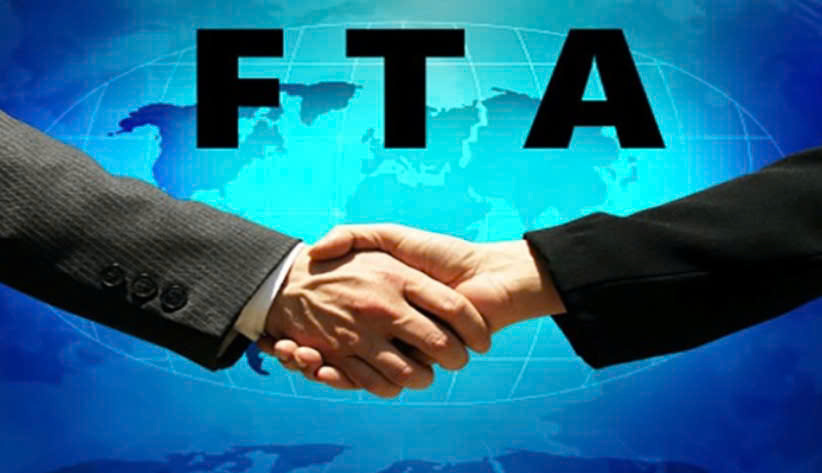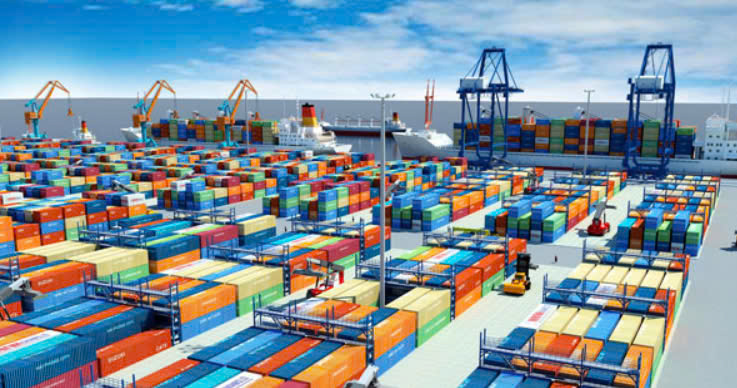In the era of international economic integration, free trade agreements (FTAs) are regarded as important tools that help countries enhance trade and strengthen their global competitive position. For Vietnam, participating in FTAs not only brings significant export opportunities but also promotes the improvement and development of the domestic economy. However, alongside the benefits, FTAs also present many challenges that businesses need to overcome.

1. What is a free trade agreement?
Free Trade Agreements (FTAs) are bilateral or multilateral trade agreements between two or more countries aimed at eliminating or reducing trade barriers such as tariffs, quotas, and non-tariff measures on goods and services. This helps create a freer trade environment, allowing businesses from FTA member countries to access each other's markets more easily.
Free Trade Agreements (FTAs) typically include:
Tariff concessions: Reduction or exemption of import duties for goods among member countries.
Rules of origin: Regulations regarding the origin of goods to benefit from tariff preferences.
Protecting intellectual property rights, food safety standards, the environment, and labor commitments.
2. The impact of FTAs on Vietnamese businesses:
2.1. Opportunities for Expanding Export Markets:
One of the biggest benefits that FTAs bring to Vietnamese businesses is the expansion of opportunities to access international markets. Major markets such as the EU, Japan, South Korea, and countries in the ASEAN bloc have become more accessible due to tax reductions on export items from Vietnam. In particular, sectors such as textiles, agricultural products, and electronics are directly benefiting from FTAs, as reduced tariff costs make their product prices more competitive compared to rivals from countries without agreements.
For example, the EVFTA (Vietnam-EU Free Trade Agreement) enables many of Vietnam's key export products to benefit from a 0% tariff advantage when entering the EU after a brief transition period. This enables Vietnamese businesses to penetrate deeper into the EU market, which has around 500 million people.
2.2 Improving the quality and production standards:
To meet the requirements of free trade agreements (FTAs), Vietnamese businesses need to comply with strict standards regarding product quality, the environment, labor, and intellectual property. This drives to improve production processes, invest in technology and governance to meet the demands of the international market. This upgrade helps businesses not only grow in the short term but also enhance their long-term competitiveness on a global scale.
2.3. Strengthening international cooperation:
The FTAs facilitate Vietnamese businesses not only in exporting products but also in participating in global supply chains. Collaboration with international partners, including multinational companies, helps Vietnamese businesses learn from experience, access advanced technology, and obtain capital from developed countries.
2.4. Promoting foreign investment:
With the advantages from FTAs, Vietnam has become an attractive destination for foreign investors. Many international businesses want to take advantage of FTAs to produce and export from Vietnam. The increase in foreign direct investment (FDI) contributes to economic growth and enhances technology in Vietnam.

3. Challenges for businesses when participating in FTAs:
3.1 The difference in standards and regulations:
FTAs often require businesses to comply with high standards of quality, environment, and labor. Many small and medium-sized enterprises in Vietnam are still facing difficulties in adapting to these standards, especially when it comes to changing production processes, investing in technology, and training personnel to meet international market requirements.
3.2. Fierce competition:
FTAs not only provide opportunities but also create stronger competition among businesses. Foreign products, thanks to benefiting from FTAs, can also easily enter the Vietnamese market. This puts pressure on domestic businesses to maintain competitive pricing, improve product quality, and enhance services so as not to fall behind right in their own backyard.
3.3 Technical barriers and legal procedures:
Regulations on origin, hygiene and food safety standards, as well as complex customs procedures, are significant challenges for businesses, especially those that lack experience in exporting. Not being clear about the regulations can lead to businesses being denied tariff benefits or even having their goods returned.
4. Solutions to leverage the benefits from FTAs:
Enhancing production capacity: To meet international standards, businesses need to invest in technology, improve production processes, and enhance product quality.
Enhancing human resource training: A highly skilled workforce with a deep understanding of the requirements of FTAs will help businesses seize the opportunities that these agreements offer.
Cooperating with support organizations: Businesses need to seek assistance from trade promotion organizations and consulting firms to understand the regulations, requirements, and opportunities from FTAs.
Proactively researching international markets: Businesses need to thoroughly study the target market, customer needs, and competitors to develop an effective export strategy.
The free trade agreement is a strategic opportunity that helps Vietnamese businesses not only expand their export markets but also enhance their competitiveness. However, to fully leverage the benefits of FTAs, businesses need to proactively adapt, invest in product quality and management systems, while also keeping up with international regulations and requirements in a timely manner. Only when well-prepared can a business thrive robustly in the global marketplace.
Hotline
Hotline